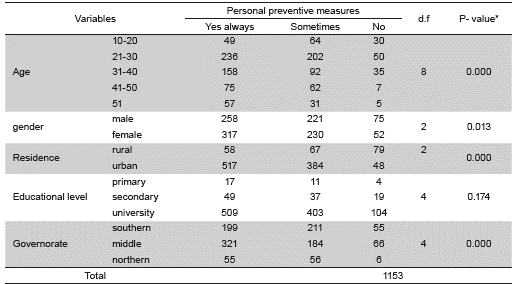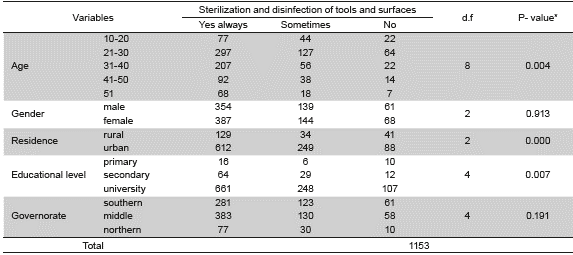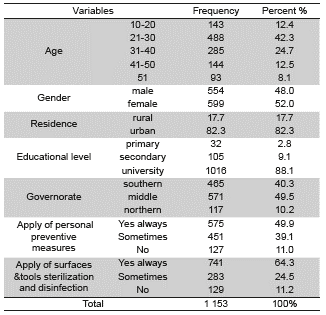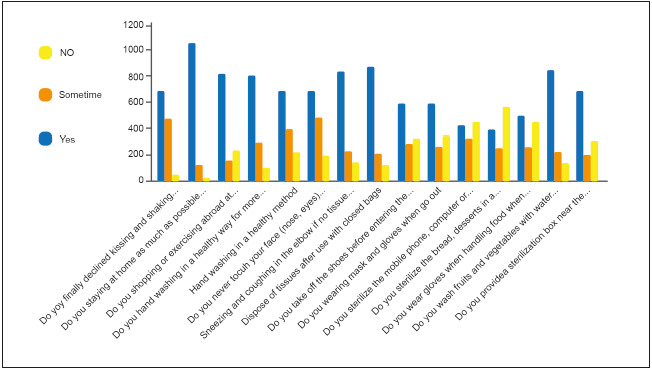Coronaviruses are a group of wrapped non-fragmented with positive-sense RNA belonging to the family "Coronaviridae order Nidovirales" and comprehensively infect human and other different mammais 1. Even though the majority of infections of human coronavirus are mild, the epidemics that happened by the two beta coronaviruses such as severe acute respiratory syndrome coronavirus (SARS-COV), and Middle East respiratory syndrome coronavirus (MERS-COV). These conditions give rise to the excessive 10, 000 accumulative cases in the previous two decades, with mortality rates of 10% for SARS-COV and 37% for MERS-COV respectively 2,3 4. At the beginning of December 2019, various pneumonia cases of obscure starting points have been developed in Wuhan, Hubei territory, China.1,2 Most of these patients were reported with exposure to the Hua-nan seafood wholesale market, selling numerous types of live animals. The sickness has quickly spread locally to different parts of China, and then worldwide to numerous nations across six continents5. The rise of a novel human coronavirus (SARS-COV-2) has become a worldwide health problem causing acute respiratory tract diseases in humans. The transmissions from human-to-human have been portrayed with the incubation period between 2-10 days, encouraging its spread through droplets, debased hands, or surfaces that were well characterized on 3rd of January 2020 6. According to WHO (COVID-19) situation report-62, it is globally observed that there were 292 142 confirmed cases and 12 784 deaths. Notably, 23 669 confirmed (1 314) and 1 596 deaths (130) were reported in the Eastern Mediterranean Region. In Iraq, the total confirmed cases were (214). While the total confirmed new cases (21), total deaths (17), and total new deaths 3, all of them were transmitted locally 7. Hygiene of hands and materials is one of the most significant measures to prevent healthcare- and outbreak-related viral infection since it plays a vital role in diminishing the spread of diseases 8. The arrangement of safe water, sanitation, and clean conditions are fundamental to ensuring human health during all irresistible infection episodes, including the COVID-19 flare-up. ensure proper and reliably applied wash and waste administration rehearses in communities, homes, schools, commercial centers, and medicinal services offices will additionally assist with forestalling human-to-human transmission of the COVID-19 infection9. The current study was applied to find out the extent of commitment among the Iraqi people to the standards of prevention measures against the coronavirus.
MATERIALS AND METHODS
Before commencing this study, informed consent was taken from all participants. A cross sectional study design was adopted to assess the extent of commitment among the Iraqi people to the standards of prevention measures against the coronavirus. The people in three main regions (Southern, Middle, and Northern) of Iraq were considered as the population of this study and for data collection. The southern region consists of (Basra, Thiqar, Maysan, Al-Qadisiyyah, and Muthanna) while the middle region was (Baghdad, Wasit, Najaf, Al- An-bar, Babil, Karbala, and Diyala) and finally the northern area (Duhok, Erbil, Kirkuk, Saladin, Sulaymaniyah, and Ninevah). Before the start of the study, a pilot study was conducted on a sample of 30 respondents. Then, the data were analyzed to find out the reliability and validity of the questionnaire and the internal consistency by using the Cronbach alpha test. The value of the alpha test was 82.
This study was conducted during the period from 17th to 25th of March 2020. A structured questionnaire was administered to the participants. This questionnaire was designed by the researcher in such way to explore the implementation of preventive measures among them. A total of 1 153 persons from both sex who responded to the questionnaire were included. This study excluded those who did not complete the questionnaire sheet. The questionnaire used in this study consists of three parts; the first one contains demographic characteristics covered age, gender, residence, governorate, and educational level. Second, concerns with implementation of personal preventive measures (finally declined kissing and shaking hands, Staying at home as much as possible, etc.) The third part was about sterilization and disinfection of tools and surfaces such as (use antiseptics and disinfectants to clean hand-touch surfaces, wear gloves before starting the cleaning, wash reusable tools such as brooms and mops with hot water at a temperature of 60-90D after cleaning, etc.). The preventive measures used in the questionnaire were based on the World Health Organization (WHO) and Coronavirus disease (COVID-19): Awareness resources from the Canadian government.
The data analysis was carried out using the statistical package of social science (SPSS) IBM version 20 software. The descriptive statistics frequency and percentile are used to identify the characteristics of our study population. A Chi-square test is used to analyze the association between demographic features and preventive measures with a level of significance of 5% (p<0.05, two-tailed).
RESULTS
Most of the respondents (52%) were female, and most of them (42.3%) were observed between the age group of 31-40 years. About 82% of the respondents were residents of urban areas. Concerning the educational level, the distribution of the respondents was observed at 88% at the university level, 9.1% at the secondary level, and 2.8% at the primary level. According to Iraq regions, the distribution of the respondents at middle, northern and southern regions was observed 49.5, 10.2, and 40.3% respectively. Finally, in respect to preventive measures, most of the respondents have adhered to these protective measures to protect themselves (Table 1).
Further, this study revealed that most respondents always applied personal preventive measures. The implementation of personal preventive measures showed a significant association with the demographic characteristic of respondents (p=0.000) and gender (p=0.013). However, no significant association was found between educational level and personal preventive measure (Table 2).
Table 2 Association between personal preventive measures and demographic characteristics

*P- value < 0.05
The association between the sterilization and disinfection of tools, surfaces, and demographic characteristics was represented in Table 3. This study showed that most of the respondents followed sterilization methods for tools and surfaces. A significant association was observed among sterilization measures and age, residence, and educational level, whereas no significant association was found in relation to gender and governorate.
Table 3 Association between Sterilization and disinfection of tools, surfaces, and demographic characteristics

*P- value < 0.05
DISCUSSION
Currently, COVID-19 is treated as a significant global health problem affecting all ages and both genders. It is also placing a significant economic encumbrance on public health systems. WHO and European Centre for Disease Prevention and Control has recommended guidelines in hand hygiene, personal protective equipment, and health care as it plays an essential role in preventing the spread of the COVID-19. This study observed that most Iraqis adopted personal protective measures as hand hygiene, social distancing, implementation of quarantine. Such measures are considered as the main route to decrease the virus transmission 10. For this reason, only a few cases in Iraq was observed according to the WHO report as of 21st March 2020. It is noteworthy that the deaths that occurred mostly were due to heart diseases and other chronic diseases 7.
This study illustrated that most of the respondents applied sterilization method by antiseptics and disinfectants to clean hand-touch surfaces like cans, tables, power presses, televisions to reduce the infection because the virus can remain infectious on inanimate for nine days at room temperature, these disinfectants reduce virus infectivity 6.
This study reveals that there is a proper implementation of preventive measures by the Iraq government against COVID-19. It is observed that the application of prevention standards in the countryside is less than in the city. This finding requires the attention of the Ministry of Health by developing health teams consisting of workers in the field of public health and epidemiology to educate the population in rural areas. Therefore, this study identified adequate adherence among Iraqis to preventive measures against COVID-19. There is a need for the effective implementation of preventive measures against COVID-19 in rural areas to control the spread of coronavirus infection ♦
















